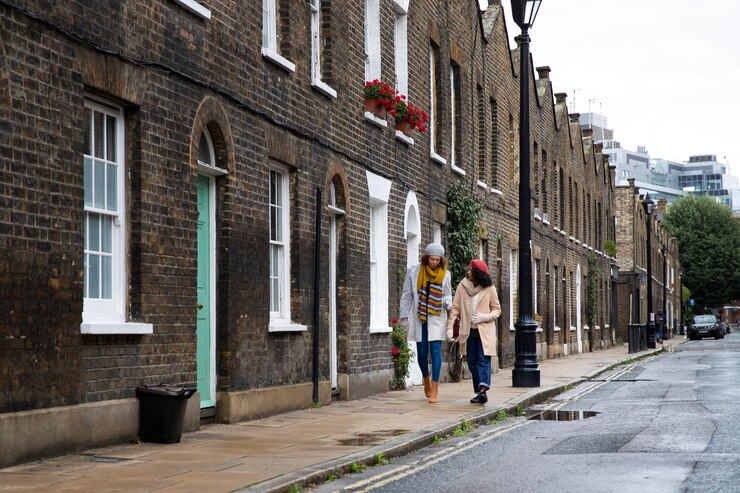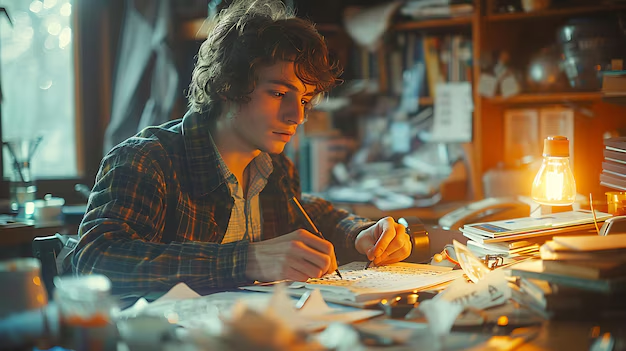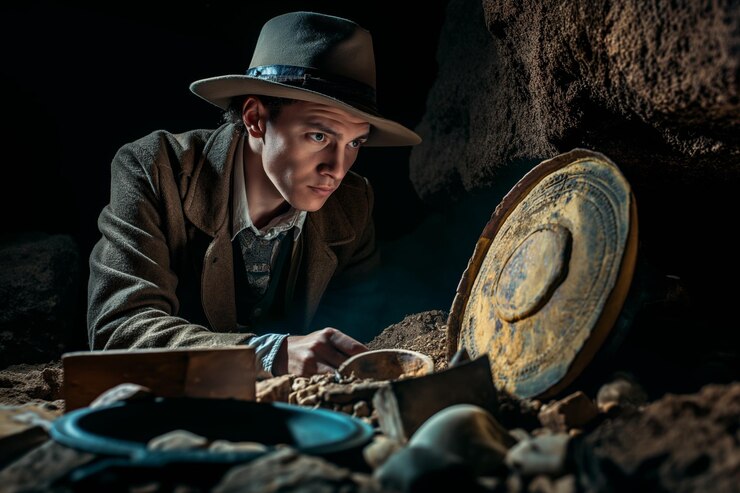
Rzinho is a vibrant and captivating dance form with deep cultural roots. Its origins trace back to Brazil, where it began as a rhythmic expression of joy and resilience. Over the years, Rzinho has evolved, blending various influences and creating a unique style that resonates worldwide.
From its dynamic movements to its health benefits, Rzinho offers more than just entertainment. It’s a way to connect with culture, improve well-being, and enjoy a rich tradition. This article explores Rzinho’s history, characteristics, global variations, and its role in popular culture, providing a comprehensive understanding of this fascinating dance.
Origins and History
Rzinho, a dance form that has captivated many, finds its roots in the rich cultural tapestry of Brazil. Its early beginnings can be traced back to the Afro-Brazilian communities, where it emerged as a fusion of African rhythms and local Brazilian influences. This dance was not just a form of entertainment but a crucial aspect of social gatherings, celebrations, and rituals.

The evolution of Rzinho reflects Brazil’s diverse cultural history. African slaves brought their music and dance traditions to Brazil, which blended with the indigenous and Portuguese influences, creating a unique cultural expression. Over time, Rzinho absorbed elements from other dance forms and musical styles, such as samba and capoeira, further enriching its complexity and appeal.
During the early 20th century, Rzinho gained prominence in urban centers like Rio de Janeiro and São Paulo. This period saw the rise of samba schools and dance halls, where Rzinho was performed and enjoyed by people from various social backgrounds. Its infectious rhythms and energetic movements made it a popular choice at festivals, parades, and community events.
As Brazil modernized, Rzinho continued to adapt, incorporating contemporary music styles and new dance techniques. The 1970s and 1980s marked a significant period for Rzinho, with the emergence of Brazilian funk. This genre brought a new dimension to Rzinho, combining traditional movements with modern beats and electronic music, making it even more appealing to the younger generation.
The cultural significance of Rzinho extends beyond Brazil’s borders. The dance has influenced various global dance trends and has been showcased at international festivals and events. Its dynamic nature allows it to be a versatile form of expression, adaptable to different musical genres and cultural contexts.
Characteristics and Cultural Significance
Rzinho is characterized by its dynamic movements, rhythmic complexity, and expressive style. At its core, Rzinho embodies a blend of African, Indigenous, and Portuguese influences, creating a unique dance form that is both vibrant and intricate. Key elements of Rzinho include:
1. Rhythmic Patterns: Rzinho’s rhythm is its heartbeat. The dance is performed to syncopated beats, often played on traditional Brazilian instruments like the pandeiro, atabaque, and berimbau. These rhythms drive the movements and set the pace for the dancers.
2. Movements and Techniques: Rzinho incorporates a wide range of movements, from fast footwork and body isolations to fluid, sweeping gestures. The dance often involves improvisation, allowing dancers to express their individuality and creativity. Common moves include the samba step, the ginga (a swaying motion), and the meia-lua de compasso (a circular kick).
3. Attire: Traditional attire for Rzinho often includes colorful, flowing garments that enhance the visual appeal of the dance. In performances, dancers might wear costumes that reflect their cultural heritage, adding an element of storytelling to their movements.
4. Music and Instruments: The music accompanying Rzinho is an essential component, with live percussion creating an immersive experience. The melodies and rhythms are often upbeat and lively, encouraging both dancers and audience members to join in the celebration.
Cultural Significance:
Rzinho holds a special place in Brazilian culture, serving as a symbol of community, resilience, and joy. It is more than just a dance; it is a cultural expression that brings people together and fosters a sense of belonging. Some aspects of its cultural significance include:
1. Social Gatherings: Rzinho is a central feature of many social events in Brazil, from local festivals and parades to family celebrations. It acts as a communal activity that bridges generational and social gaps, allowing people of all ages and backgrounds to participate.
2. Cultural Heritage: As a fusion of African, Indigenous, and Portuguese traditions, Rzinho represents the rich cultural heritage of Brazil. It preserves the history and stories of these communities, passing them down through dance and music.
3. Identity and Pride: For many Brazilians, Rzinho is a source of national pride. It showcases the creativity and resilience of the Brazilian people, celebrating their ability to transform adversity into art. The dance is also a form of self-expression, allowing individuals to convey their emotions and experiences.
4. Global Influence: Rzinho has transcended its Brazilian roots to influence dance styles and cultures worldwide. Its energetic and expressive nature has inspired dancers and artists across the globe, making it a significant cultural export.
Health Benefits and Personal Growth
Rzinho is not only a cultural dance but also a beneficial activity for physical and mental well-being. Engaging in this dance offers multiple health advantages and opportunities for personal growth.
Health Benefits:
1. Cardiovascular Exercise: Rzinho is a high-energy dance that provides an excellent cardiovascular workout. The continuous movements, rapid footwork, and rhythmic patterns elevate the heart rate, improving cardiovascular health and increasing stamina. Regular practice helps in burning calories, aiding in weight management and enhancing overall fitness.
2. Improving Coordination: The intricate steps and fluid motions of Rzinho require good coordination and balance. Dancers must synchronize their movements with the music, which enhances motor skills and spatial awareness. Over time, this improves reflexes and agility, making the body more responsive and coordinated.
3. Mental Well-being: Dancing Rzinho has significant mental health benefits. It is a form of physical activity that releases endorphins, which help reduce stress and anxiety levels. The rhythmic movements and music provide a meditative effect, promoting relaxation and mental clarity. Additionally, the social aspect of dancing with others fosters a sense of community and belonging, contributing to emotional well-being.
4. Flexibility and Strength: The diverse movements in Rzinho, including stretches, kicks, and body rolls, enhance flexibility. Regular practice helps in increasing the range of motion in joints and muscles. The dance also involves using various muscle groups, which builds strength and endurance over time.
Personal Growth:
1. Stepping Out of Comfort Zones: Learning and performing Rzinho encourages individuals to step out of their comfort zones. It challenges them to try new movements and express themselves in ways they might not have before. This fosters confidence and helps in overcoming self-imposed limitations.
2. Exploring Passions: Rzinho offers a platform for individuals to explore their passion for dance and music. It allows them to connect with their cultural heritage and express their creativity. Engaging in something they love provides a sense of fulfillment and joy.
3. Embracing Change: The dynamic nature of Rzinho teaches dancers to be adaptable and open to change. The improvisational aspect of the dance encourages quick thinking and flexibility, both mentally and physically. This adaptability is a valuable skill that extends beyond the dance floor into everyday life.
4. Social Connections: Participating in Rzinho creates opportunities for social interaction and building connections. Whether in a class, at a festival, or during a performance, dancers meet new people and form friendships. These social bonds provide support, encouragement, and a sense of belonging.
5. Discipline and Commitment: Mastering Rzinho requires dedication and consistent practice. This discipline translates into other areas of life, teaching the value of hard work and perseverance. The commitment to learning and improving skills fosters a strong work ethic and resilience.
Learning and Practicing Rzinho
Learning and practicing Rzinho is an enriching experience that combines physical activity with cultural immersion. This section will guide you through the various aspects of mastering this dance form, from foundational techniques to advanced moves.

Techniques and Training:
1. Basic Steps and Movements: Starting with the basics is essential. The foundational step in Rzinho is the “ginga,” a swaying motion that forms the basis for many other movements. Mastering this step helps in maintaining rhythm and balance. Practice shifting weight from one foot to the other, keeping the knees slightly bent and the body relaxed.
2. Footwork: Rzinho involves intricate footwork that requires agility and precision. Steps like the “samba step” are crucial, where the dancer shifts weight between feet while adding a bounce to the movement. Regular practice of these steps improves coordination and speed.
3. Body Isolation: One of the unique aspects of Rzinho is the ability to isolate different parts of the body. This includes movements like body rolls and hip circles. Practicing body isolation helps in achieving fluidity and control, making the dance more expressive.
4. Kicks and Spins: Advanced techniques in Rzinho include various kicks and spins. The “meia-lua de compasso,” a circular kick, is a prominent move that adds flair to performances. Spins require balance and focus, often incorporating elements of capoeira.
5. Rhythm and Timing: Understanding the rhythm of Rzinho music is vital. Practice dancing to different tempos and styles of music to develop a strong sense of timing. This enhances your ability to synchronize movements with the beats, creating a harmonious performance.
Popular Brazilian Rzinho Moves:
1. The Samba Step: The samba step involves a rhythmic bounce, shifting weight between feet while keeping the hips loose. It’s a lively and energetic move that is central to Rzinho.
2. The Ginga: The ginga is a swaying motion, essential for maintaining balance and rhythm. It serves as a foundation for other movements, helping dancers transition smoothly between steps.
3. The Meia-Lua de Compasso: This move is a circular kick performed with one leg while pivoting on the other. It requires flexibility and strength, adding a dramatic flair to the dance.
Practice and Improvement:
1. Consistent Practice: Regular practice is key to mastering Rzinho. Set aside time each day to practice the basic steps and gradually incorporate more complex moves. Consistency helps in building muscle memory and improving technique.
2. Watching and Learning: Observing skilled Rzinho dancers can be highly beneficial. Watch performances, tutorials, and live shows to learn new moves and understand the nuances of the dance. Mimicking experienced dancers helps in refining your style.
3. Joining Classes: Participating in Rzinho classes offers structured learning and guidance from experienced instructors. Classes provide an opportunity to practice with others, receive feedback, and learn in a supportive environment.
4. Participating in Workshops: Workshops are intensive sessions that focus on specific aspects of Rzinho. They often feature guest instructors who bring different styles and techniques. Attending workshops helps in gaining new insights and improving skills.
5. Online Resources: There are numerous online resources available for learning Rzinho. Video tutorials, online classes, and forums provide valuable information and community support. Utilize these resources to supplement your practice.
Performance and Expression:
1. Improvisation: Rzinho allows for a lot of improvisation, making each performance unique. Practice improvising to different music styles, experimenting with new moves and combinations. This enhances creativity and personal expression.
2. Confidence Building: Performing Rzinho in front of an audience can be daunting, but it’s an essential part of the learning process. Start with small, informal performances and gradually move to larger stages. This builds confidence and hones performance skills.
3. Connecting with the Audience: Engage with your audience through eye contact, facial expressions, and body language. A strong connection with the audience enhances the overall impact of the performance, making it more memorable.
Rzinho in Popular Culture
Rzinho has left a significant mark on popular culture, influencing various forms of media and entertainment. Its lively rhythms and expressive movements have transcended the dance floor, making their way into music videos, films, and digital platforms. This section explores how Rzinho has become a cultural phenomenon, shaping and being shaped by the entertainment industry.
Influence in Music Videos and Films:
1. Music Videos: Rzinho’s dynamic and energetic style has made it a popular choice for music video choreography. Many artists incorporate Rzinho moves into their performances to add a vibrant and authentic touch to their videos. The dance’s captivating visuals complement the music, creating a powerful synergy that enhances the overall appeal of the song.
2. Films: The cinematic world has also embraced Rzinho, featuring it in numerous films that highlight Brazilian culture. These movies often showcase Rzinho in both celebratory and dramatic contexts, demonstrating its versatility and emotional depth. Films like “Only When I Dance” and “Dance of My Heart” provide a glimpse into the lives of Rzinho dancers, portraying their passion and dedication.
Rzinho in Digital Media and Memes:
1. Social Media: Rzinho has found a vibrant community on social media platforms where dancers share their performances and tutorials. Hashtags dedicated to Rzinho dance trends attract millions of views, allowing enthusiasts to connect and celebrate their love for the dance. Platforms like Instagram, TikTok, and YouTube play a crucial role in spreading Rzinho’s popularity globally.
2. Memes and Viral Content: The dance has also become a part of internet culture through memes and viral content. Short clips of Rzinho moves, often set to catchy tunes, spread rapidly across social media, bringing the dance to a wider audience. These viral moments help keep Rzinho relevant and engaging, especially among younger audiences.
Global Influence and International Festivals:
1. Global Dance Communities: Rzinho has transcended its Brazilian roots to influence dance communities worldwide. International dance schools and studios offer Rzinho classes, attracting students eager to learn this dynamic dance form. The global spread of Rzinho fosters cultural exchange and appreciation, highlighting its universal appeal.
2. International Festivals: Rzinho is celebrated at numerous international dance festivals, where dancers from different countries come together to perform and learn. These events often feature workshops, competitions, and performances, showcasing the talent and diversity within the Rzinho community. Festivals like the Rio Carnival and the World Dance Festival in Berlin are notable for their grand Rzinho showcases.
Impact on Fashion and Lifestyle:
1. Fashion: Rzinho’s influence extends to fashion, where its vibrant and colorful attire inspires designers. The traditional costumes worn during Rzinho performances often feature in fashion shows and collections, blending cultural elements with contemporary styles. This fusion highlights the dance’s aesthetic appeal and its impact on the fashion industry.
2. Lifestyle: Adopting Rzinho as a lifestyle goes beyond dancing; it encompasses embracing the cultural and social aspects of the dance. Enthusiasts often participate in community events, celebrate Brazilian festivals, and incorporate Rzinho-inspired routines into their fitness regimes. This lifestyle promotes cultural awareness and a sense of community among participants.
Representation in Media:
1. Television and Documentaries: Television shows and documentaries provide a platform for showcasing Rzinho’s rich history and cultural significance. Programs like “Dancing with the Stars” have featured Rzinho routines, introducing the dance to broader audiences. Documentaries delve into the stories of Rzinho dancers, offering insights into their journeys and the cultural context of the dance.
2. Online Resources: Numerous online platforms and resources are dedicated to Rzinho, offering tutorials, historical information, and performance videos. These resources make learning and appreciating Rzinho accessible to a global audience, fostering a deeper understanding of its cultural importance.
Global Variations and Festivals
Rzinho’s appeal extends far beyond Brazil, reaching audiences and dance enthusiasts worldwide. This section explores the various regional adaptations of Rzinho and the international festivals that celebrate this dynamic dance form.

Global Dance Communities:
1. Adoption Worldwide: Rzinho has been embraced by dance communities globally. In countries across Europe, North America, Asia, and beyond, dancers have incorporated Rzinho into their repertoires, blending it with local dance styles and creating unique variations. This global adoption reflects Rzinho’s universal appeal and adaptability.
2. Cultural Exchange: International dance schools and studios offer Rzinho classes, providing platforms for cultural exchange. These classes often feature instructors from Brazil, ensuring authenticity while also allowing local dancers to add their own flavor. This exchange enriches the dance form and fosters a sense of global community.
3. Influences and Adaptations: Each region that adopts Rzinho tends to infuse it with local cultural elements. For example, in the United States, Rzinho might incorporate hip-hop or contemporary dance moves. In Europe, it may blend with traditional folk dances. These adaptations keep Rzinho vibrant and evolving, showcasing its flexibility and broad appeal.
International Festivals:
1. Rio Carnival: The Rio Carnival is one of the most famous festivals in the world, and Rzinho plays a central role. This event attracts millions of visitors who come to witness the grand parades and performances that highlight Brazilian culture, with Rzinho being a significant part of the celebration. The carnival provides a global stage for Rzinho, showcasing its energy and creativity.
2. World Dance Festival in Berlin: The World Dance Festival in Berlin is another significant event where Rzinho is prominently featured. This festival gathers dancers from around the globe, offering workshops, competitions, and performances. Rzinho enthusiasts get the chance to learn from top instructors and perform in front of an international audience.
3. International Samba Congress: The International Samba Congress is dedicated to celebrating Samba and Rzinho. Held annually, it features workshops, lectures, and performances by renowned dancers and musicians. This congress is a vital platform for promoting and preserving the dance, attracting participants from various countries who share a passion for Rzinho.
4. Global Dance Open in Japan: In Japan, the Global Dance Open has become a significant event for Rzinho. The festival includes performances and competitions that highlight the dance’s global influence. Japanese dancers have shown a remarkable affinity for Rzinho, contributing to its popularity in Asia.
Regional Festivals and Community Events:
1. Local Festivals: Many cities worldwide host local festivals that include Rzinho performances. These events might be part of multicultural festivals or dedicated dance events, where local dance schools and communities come together to celebrate and perform Rzinho.
2. Community Gatherings: Community centers and cultural organizations often hold events to promote Rzinho. These gatherings provide opportunities for people to learn the dance, watch performances, and participate in workshops. Such events play a crucial role in keeping the dance form alive and accessible.
Cultural Preservation Efforts:
1. Teaching Future Generations: Ensuring that Rzinho continues to thrive involves educating future generations. Dance schools and cultural programs play a significant role in this effort. By teaching young dancers the techniques and history of Rzinho, these institutions help preserve the dance’s legacy.
2. Documenting Performances: Recording and documenting Rzinho performances is another way to preserve the dance. Videos, photographs, and written records help maintain a historical archive that future generations can reference. These materials also serve as educational tools for those interested in learning Rzinho.
3. Promoting Awareness: Cultural organizations and dance enthusiasts work tirelessly to promote awareness of Rzinho. Through social media campaigns, public performances, and educational programs, they ensure that Rzinho remains visible and appreciated on the global stage.
Conclusion
Rzinho stands as a vibrant testament to the power of cultural expression and human creativity. From its roots in Brazilian communities to its global adaptations, the dance continues to evolve while maintaining its core essence. It offers significant health benefits, fosters personal growth, and creates lasting social connections. Celebrated in festivals around the world and embraced by diverse communities, Rzinho transcends cultural boundaries, uniting people through its infectious rhythm and dynamic movements. As both an art form and a cultural phenomenon, Rzinho’s enduring appeal and adaptability ensure that it will continue to inspire and bring joy to future generations.
Frequently Asked Questions
1. What is the origin of Rzinho?
Rzinho originated in Brazil, particularly within Afro-Brazilian communities. It evolved as a blend of African rhythms, Indigenous movements, and Portuguese influences, creating a unique and vibrant dance form.
2. What are the health benefits of practicing Rzinho?
Rzinho offers numerous health benefits, including improved cardiovascular health, enhanced coordination, increased flexibility, and mental well-being. It is a high-energy dance that helps with weight management and stress reduction.
3. How can I learn Rzinho if I am not in Brazil?
Many dance schools around the world offer Rzinho classes. Additionally, there are numerous online resources, including video tutorials and virtual classes, that can help you learn the dance from home.
4. What are some popular moves in Rzinho?
Some popular moves in Rzinho include the samba step, the ginga, and the meia-lua de compasso. These movements are foundational and essential for mastering the dance.
5. How has Rzinho influenced popular culture?
Rzinho has significantly influenced popular culture through music videos, films, and social media. It has also become a popular feature in international dance festivals, showcasing its global appeal and adaptability.







